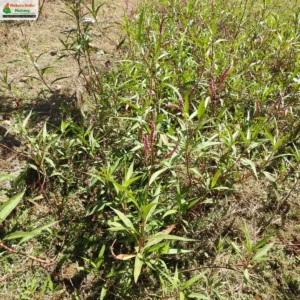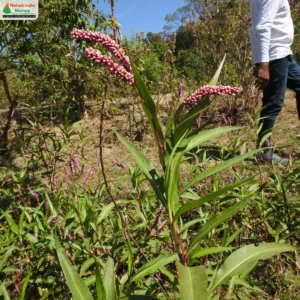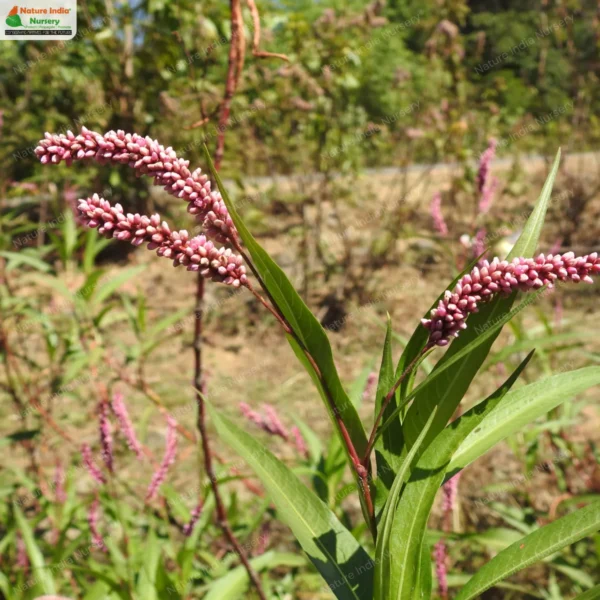Persicaria glabra, also known as denseflower knotweed, is a medium-sized annual or perennial herb in the Polygonaceae family. The plant typically grows 0.5–1.5 meters tall, with erect, glabrous, and often reddish stems that are swollen at the nodes. The leaves are narrowly lanceolate, measuring 5–22 cm long and 1–3.5 cm wide, with an acute or cuneate base and a gradually acuminate apex. The plant is distinguished by its tubular, truncate ochrea at the leaf base and its dense, terminal or axillary spikes of small pink or white flowers. The fruit is a flattened, polished black nut (biconvex achene) included within the perianth tube.
The inflorescence is a dense raceme, and the flowers are rose-colored, with five oblong, obtuse lobes. The plant is glabrous throughout, sometimes with a slight barbellate margin at the ochrea. Flowering and fruiting occur mainly from August to December.
Habitat
Persicaria glabra thrives in moist environments such as riverbanks, stream banks, low-lying marshy places, swamps, wet thickets, and plains. It is widely distributed across tropical and subtropical regions of Asia, Africa, North America, and the paleotropics, and is commonly found throughout India, especially in Kerala and the Western Ghats.
Planting and Care
- Light: Prefers full sun to partial shade.
- Soil: Grows best in moist, well-drained soils; tolerates marshy and periodically waterlogged conditions.
- Watering: Requires consistently moist soil; do not allow to dry out.
- Propagation: Propagated by seeds sown in moist substrates.
- Maintenance: Minimal care required; thrives in naturalized, wetland settings.
Additional Information
- Ornamental Use: Sometimes grown for its dense, attractive flower spikes in water gardens or naturalized wetland areas.
- Medicinal Properties: Used in traditional medicine and as a food source in some regions.
- Ecological Role: Provides cover and food for wetland wildlife; helps stabilize soil in riparian zones.
- Distribution: Found throughout tropical and subtropical Asia, Africa, North America, and naturalized in many wetland habitats worldwide.















